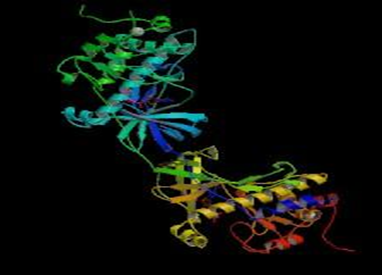Alpha kinase family
Alpha kinase family, this different family includes eEF2K (eukaryotic elongation factor 2 kinase) in most eukaryotes, as well as many other kinases in various phyla.
Major Subfamilies
1. EEF2K: Universal regulator of protein translation.
Eukaryotic elongation factor 2 kinase (eEF-2 kinase or eEF-2K), also known as calmodulin-dependent protein kinase III (CAMKIII) and calmodulin-dependent eukaryotic elongation factor 2 kinase. One of the enzymes in humans, eEF-2 kinase, is a highly conserved protein kinase in calmodulin-mediated signaling pathways that links multiple upstream signals to the regulation of protein synthesis. It phosphorylates eukaryotic elongation factor 2 (EEF2), thereby inhibiting EEF2 function. The activity of eEF-2K depends on calcium and calmodulin. The activation of eEF-2K occurs through a sequential two-step mechanism. First, calmodulin binds with high affinity to activate the kinase domain, which triggers rapid autophosphorylation of Thr-348. In the second step, the autophosphorylation of Thr-348 causes a conformational change in the kinase, which may be supported by the binding of phosphate-Thr-348 to the allosteric phosphate-binding pocket in the kinase domain. This increases the activity of eEF-2K on its substrate elongation factor 2. eEF-2K can obtain calcium-dependent activity through Ser-500 autophosphorylation. However, calmodulin must remain bound to the enzyme to maintain its activity.
Clinical significance
The kinase activity is increased in many cancers and may be an effective target for anti-cancer treatment. It has also been shown that eEF-2K may play a rapid antidepressant role in ketamine through the regulation of neuronal protein synthesis by ketamine.
2. ChaK: Vertebrate-specific fusion of a mechanosensory ion channel with an alpha kinase.
ChaK1 basic ion channel and serine / threonine protein kinase. Calcium and magnesium permeable divalent cation channels. It plays a central role in the regulation of magnesium homeostasis and hypoxic neuronal cell death. By mediating calcium influx, it is involved in TNF-induced necrotic necrosis downstream of MLKL. Kinase activity is essential for channel function. It may involve the basic process of regulating plasma membrane divalent cation flux according to the metabolic state of cells.
 Figure 1. Protein structure of ChaK1.
Figure 1. Protein structure of ChaK1.
Evolution
Vertebrates have two ChaKs: ChaK1 and ChaK2. The channel part of Chak has two vertebrate orthologs, usually a single invertebrate ortholog, which indicates that Chaks is the result of repeated genetic fusion. This alpha kinase domain appears to have homologues in S. chlamydia, but no relevant channel was found in the EST database or gene prediction.
Functions
The crystal structure of the CHAK1 gene shows PKL folding and many members of this family have been shown to have catalytic activity. These channels are Mg and Ca selective and have been fully functionally studied, but the role of the kinase domain is not fully understood. TRPM6 can act as a Mg sensor and regulate channels; it has also been suggested that in TRPM7, Ca regulates kinase activity through the flux of the channel.
AlphaK1: Metazoan kinase implicated in epithelial cell vesicle trafficking and NFkB induction in response to bacterial metabolite.
AlphaK2: Vertebrate specific alpha kinases expressed in skeletal and cardiac muscle.
Reference
- Ryazanov AG; et al. Identification of a new class of protein kinases represented by eukaryotic elongation factor-2 kinase. Proceedings of the National Academy of Sciences of the United States of America. 1997, 94 (10): 4884-9.